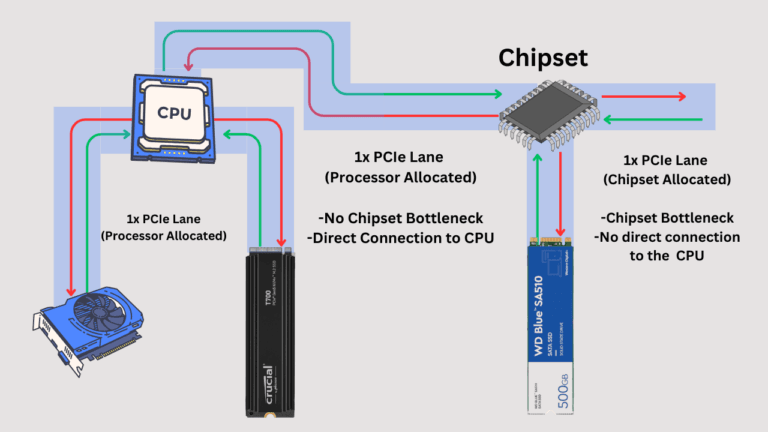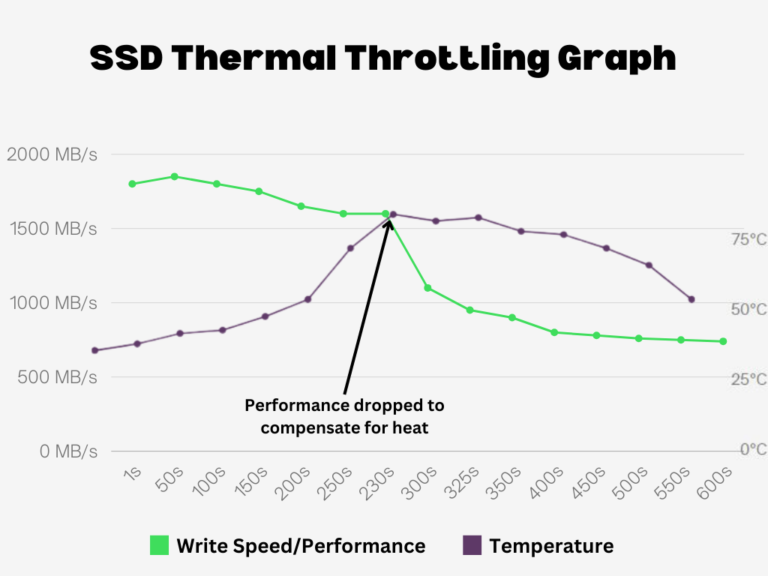Affiliate Disclosure: This post may include affiliate links. If you click and make a purchase, I may earn a small commission at no extra cost to you.
Most modern laptops support some kind of SSD. If your device doesn’t support an NVMe and is working with a hard drive, you can still get yourself a SATA SSD. However, NVMe drives are faster than SATA SSDs. There are many generations of NVMe drives. Additionally, the M.2 port can have two variations: M.2 SATA and M.2 NVMe. Due to the numerous interfaces, form factors, names, generations, and sizes, it can become confusing to decide which laptop to choose. However, if you know what your laptop supports, it becomes relatively easy to make an informed decision. In this article, I will assist you with this.
If you can open up your laptop, you can check the ports and tell which SSD is supported. However, it is always a good idea to refer to your laptop’s user manual to check the supported drive capacity, interface, and other specifications. Let’s see how you can do the same on your laptop.
How to check which SSD is supported?
We will discuss three key methods to determine which SSD is supported by your laptop.
1. Check the User Manual
Visit your laptop’s official support page and search for your specific model to find its user manual. Just search on Google with your Laptop’s brand followed by “Laptop Support”. For example, “Lenovo Laptop Support” or “HP Laptop Support“. Ensure you visit the official support website and locate your laptop carefully. Most support pages allow you to identify your products automatically using the “Detect Product” or “Detect Laptop” option. However, you can easily locate your laptop manually in the Browse Products section.

Locate your laptop’s user manual by clicking on options such as Guides & Manuals or User Manual.

Now, once you have your user manual, you’ll need to locate its storage section to check the storage specifications. Most laptop user manuals will have an index at the start. You can view the storage option in the index or search the entire document for the “storage” phrase. For the IdeaPad 1 14AMN7, I found that it has an M.2 slot compatible with 2242 and 2280 form factors.

However, this doesn’t provide any details about the capacity and interface. In this case, I would recommend either going to our next steps or talking to customer support to know what the full storage specifications actually are.
Now, some user manuals will provide you with all the important details about storage devices like this one.

In this case, I know that my laptop supports an M.2 SATA SSD of up to 256GB. Additionally, I am now assured that NVMe isn’t supported so that I can make an informed purchase with this user manual.
2. Inspecting the SSD slot
For this, you’ll need to open your laptop, as the storage slots are located on the motherboard. In most laptops, you’ll have to open the back panel to physically check the available ports. If there is a hard drive already working on your laptop, you can easily replace it with a SATA 2.5″ SSD without having to worry about compatibility.
Most people get confused about the M.2 SSD compatibility. So, I’ll give you a simple method. Just check the M.2 port’s slot or notch. If it has a notch on the right side, this laptop will support both the M.2 NVMe and the M.2 SATA SSD. If the notch is on the left side, it is an M.2 SATA-only port.
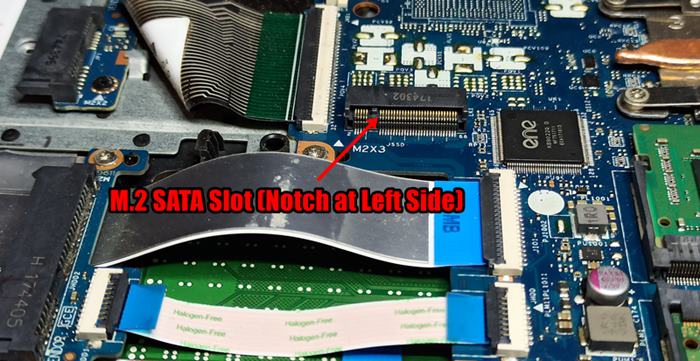
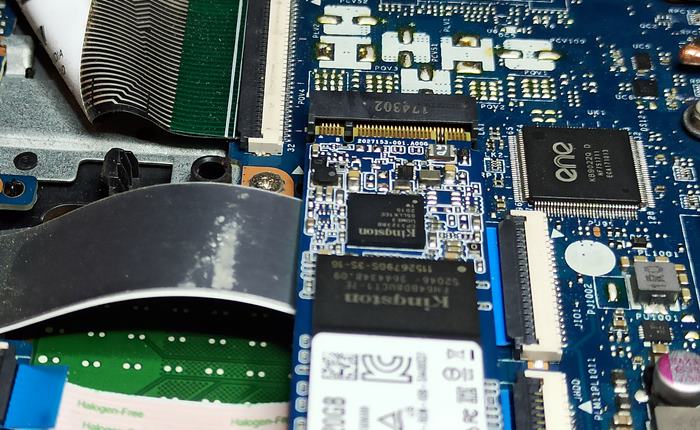

Now, even if you have identified the port, you aren’t done. Not all laptops would allow SSDs of any size. In most cases, they would be limited to SSDs with capacities of 256 GB, 512 GB, or 1 TB. If you install drives bigger than this size, it may not work on your laptop. You can confirm the maximum supported size again in the user manual or by talking to customer support.
The SATA slot would be the same for all SATA-based SSDs and Hard drives. However, laptops generally come with 2.5″ hard drives, and the SATA 2.5″ SSDs share the exact dimensions.
3. Visit the Laptop Part Store
On your laptop’s support website, you can buy the original upgrade or repair parts. This tool is designed for those who want to repair their laptops, but it can also be used to detect the supported SSDs on their laptops. For this search on Google, “Your Laptop’s brand” + Laptop Parts Store. For example, the Lenovo Laptop Parts Store or the Asus Laptop Parts Store. This doesn’t work for all brands and models, but take a look at the image. I have found a suitable SSD along with its specifications for my laptop on the official website. Now, I can easily buy another SSD with the exact specifications, and it would work on my laptop.

4. Use Speccy or HWINFO (Third-Party Software)
Alternatively, you can install Speccy or HWInfo to easily determine the type of drive installed and its details. They don’t provide information about the free slots and their types, but you can still determine what is installed if you want to upgrade your system with a new drive.

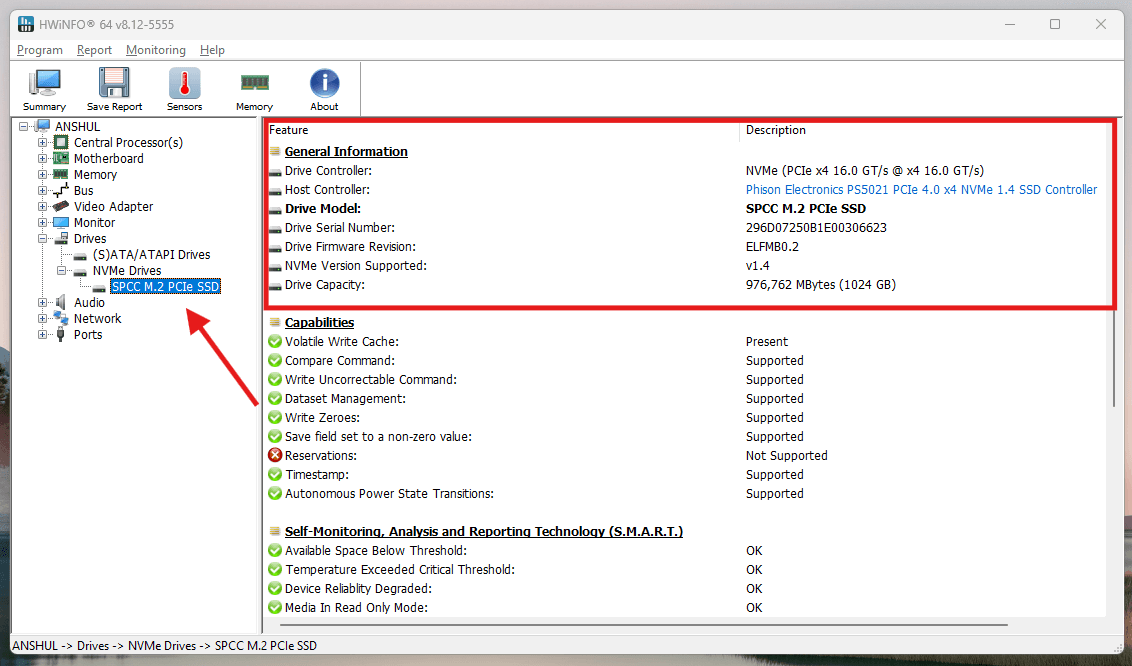
How to check whether an SSD or a Hard Drive is installed in your laptop?
The first method is to open the Optimize Drives menu in Windows. Here, you will see the list of all the installed drives in your laptop and their type, whether they are SSDs or Hard Drives.

If you want to see more details, you can open the System Information menu and find the Storage section. To open this menu, you can simply search in the Windows Start search for System Information.

Again, Speccy and HWInfo will give you the details about the installed drives.
What if you’re unable to figure it out?
The user manual should provide you with all the necessary information about the supported SSD and its specifications. However, if you can’t find it and you also can’t open your laptop to inspect the motherboard, it is best to visit an authorized service center for your laptop.
I hope this helps!



